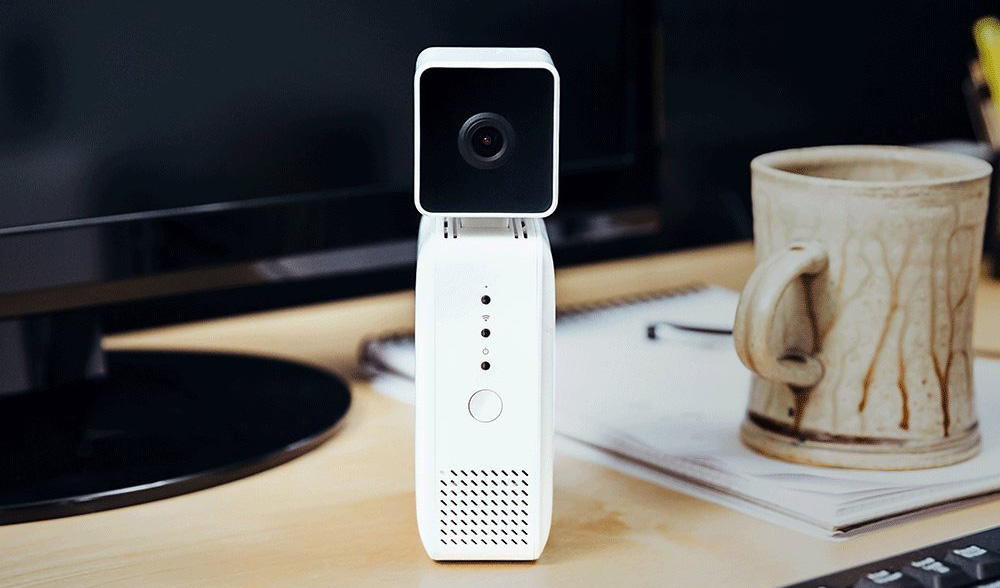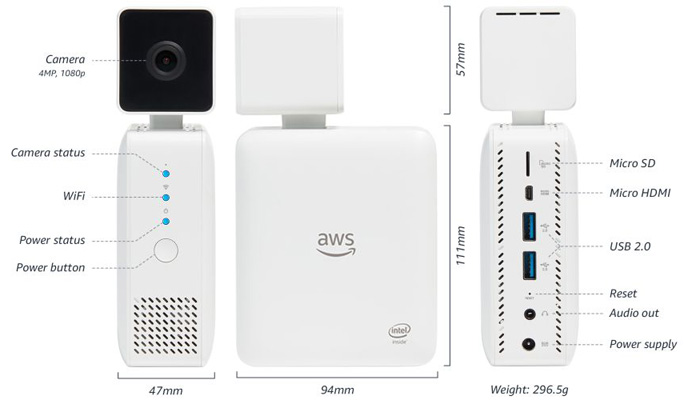Amazon DeepLens - the first Wi-Fi camera with Deep Learning

Wi-Fi cameras are widely used in everyday life - for the protection of premises, tracking what is happening and so on. It seems that everything has been invented here a long time ago, however, the emerging hardware and software functionality opens up new and new possibilities for their use. Last week, Amazon Web Services (AWS) introduced the Amazon DeepLens camera, which they call the world's first Deep Learning wireless camera. As you can guess, Intel didn’t do it here - it was on our platform that this device was made.
Amazon DeepLens is positioned as a fully programmable video camera for developers to meet their diverse needs. The emphasis is on the simplicity and breadth of the range of its use, achieved through software. According to the developers, the first results in the development of Deep Learning applications for the camera can be obtained within 10 minutes. This is achieved by:
- using the cloud service of executing the AWS Lambda code;
- Support for other Amazon cloud services: AWS IoT, Amazon SQS, Amazon SNS, Amazon S3, Amazon DynamoDB, and others - the name of a million;
- providing a set of ready-made projects showing the implementation of typical functionality, for example, "how to distinguish a cat from a dog";
- support for other deep learning libraries and neural networks, such as the Intel Compute Library for Deep Neural Networks (Intel clDNN);
- all other accumulated baggage of development tools for Linux (the camera runs under Ubuntu OS).

However, the operation of all this software diversity would be impossible without the hardware of the corresponding performance. From the point of view of the equipment (except what you see in the picture), the camera looks like this.
| CPU | Intel Atom x5 (Cherry Trail) |
| Memory | 8 GB |
| Graphics | Intel Gen9 Integrated |
| Storage | From 16 GB |
According to the developers, the computing power of the CPU is 100 Gigaflops, which allows implementing a number of Deep Learning algorithms directly on the device in real time.
In my opinion, the Amazon DeepLens camera will be of interest primarily to those of DIY, who are seeking to expand the functionality and intelligence of their systems at the expense of computer vision components. Included with all its software, it can be a simple and easy solution. However, the question arises, what will be the cost of ownership of such a solution, taking into account the payment of all necessary cloud services.
The cost of the camera itself is $ 249 ( on pre-order for April ). In our country, as usual, the goods are not shipped, but who stopped it?
All Articles